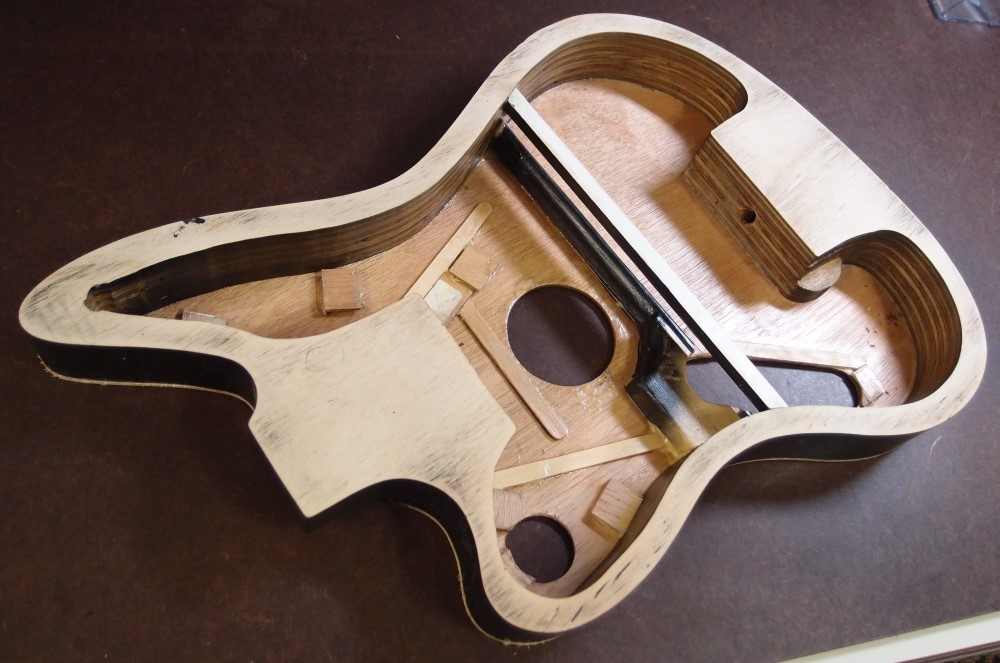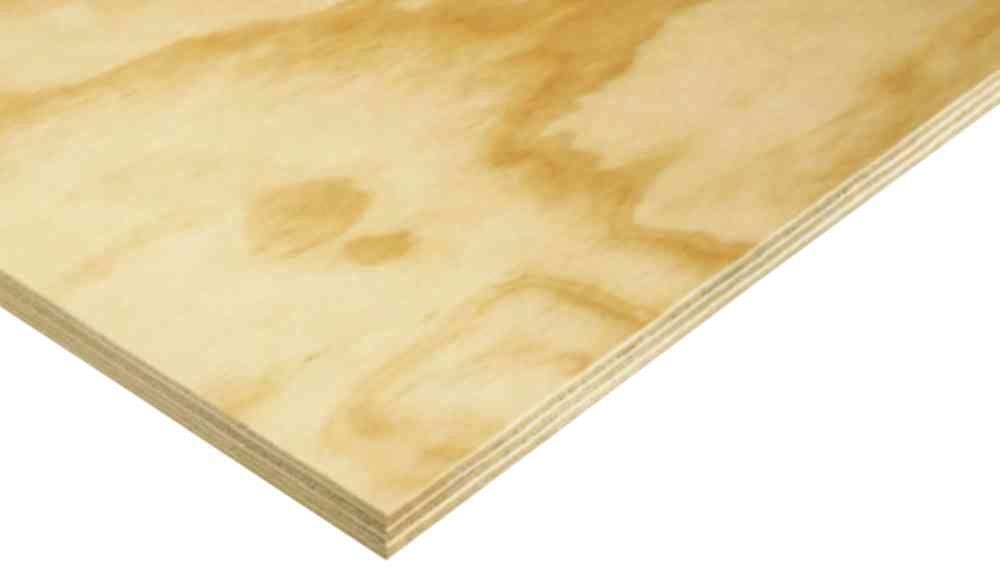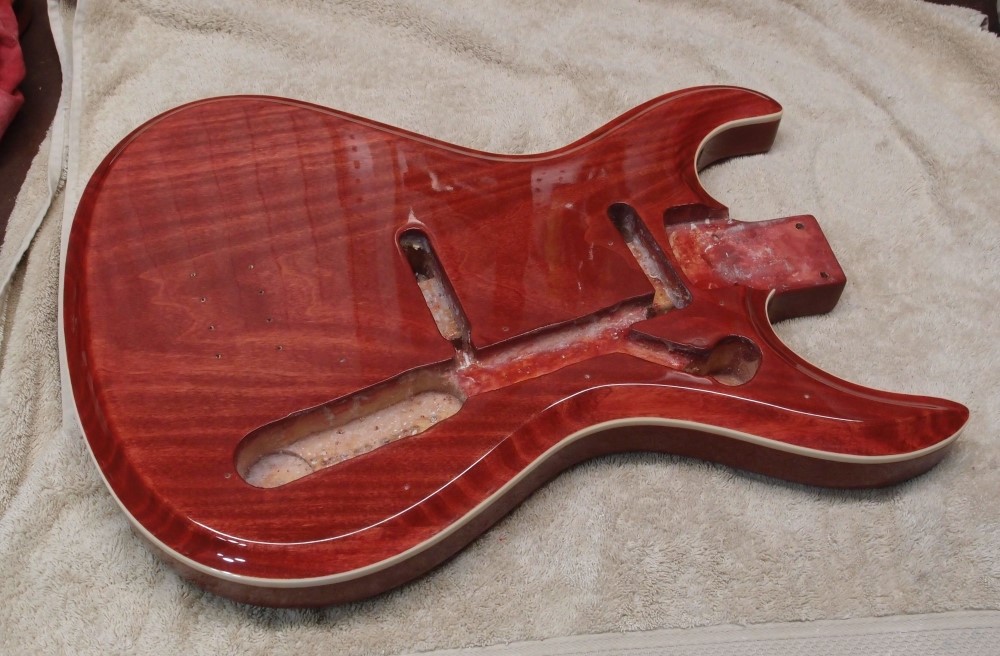Plywood

Cabinet-grade plywoods are ideal for guitar faces. Maple, birch, oak, and many other woods are available from your local home supplies store. For hollow-body faces, 1/4" plywood or thinner is used. When using plywood for faces, you must take care not to sand through the surface ply.
Plywood can also be used for body sides, as shown above. For this use, any grade of plywood will do, my favorite is dumpster plywood. Two 3/4" or 5/8" pieces plus thin faces makes a reasonable thickness for a guitar body.
Used this way, plywood exposes a very rough surface at the sides. This can be filled with Bondo or other two-part wood filler and sanded smooth. However, it is likely that the grain will 'pull through' the finish eventually, resulting in a slight checking or dimpling. Another alternative is Tolex side binding.
Plywood is very strong, hard, and heavy. You can cut shapes from plywood that would probably break along the grain if it was real wood. However, plywood is too heavy to build a full-thickness solid body from, it is best used for chambered bodies as shown above.
Some all-plywood body projects:



Questions or Inquiries?
Just want to say Hello? Sign the .